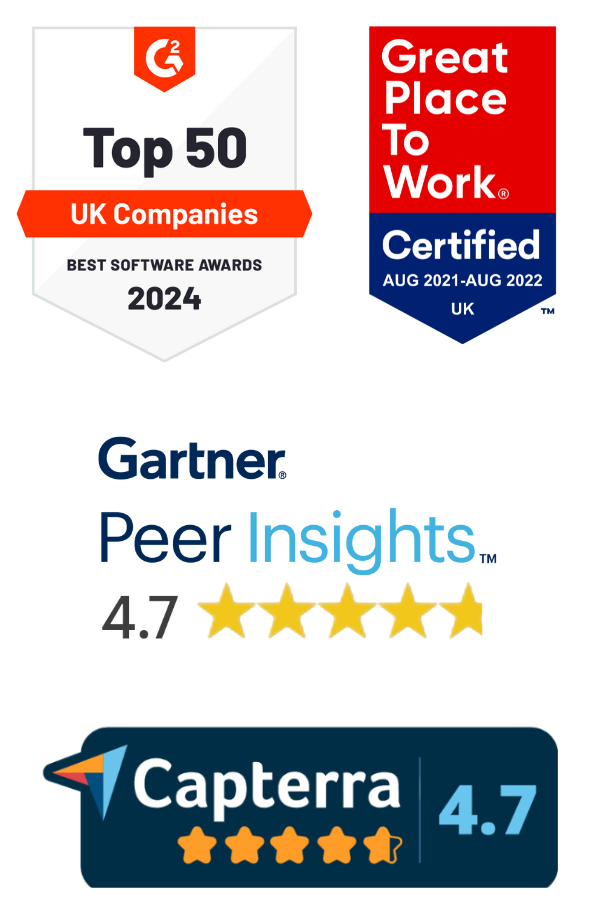![Alex Her: AI, Culture & The ROI of Employee Advocacy [Podcast] 1 Podcast thumbnail featuring a picture of guests Alex and Emma.](https://dsmn8.com/wp-content/uploads/2025/08/Alex-Her-Episode-Thumbnail.jpg)
[Episode Sixty-Seven of ‘The Employee Advocacy and Influence Podcast] 🎧
What does it take to turn an employee advocacy program into a huge ROI success story? In this episode of The Employee Advocacy & Influence Podcast, Alex Her, Head of Global Employer Brand, reveals exactly how he did it.
Joined by co-hosts Lewis Gray and Emma Powney, Alex shares his grassroots approach to rebuilding his employee advocacy program from scratch. Starting with just a Slack channel and a group of willing employees, Alex gamified participation, celebrated wins, and proved value through hard metrics like earned media value. Along the way, he shares why culture is more important than technology, how to scale globally without losing authenticity, and where AI fits into the future of advocacy.
What You’ll Learn in This Episode:
- Why failed advocacy programs often miss the “culture” factor
- How to gamify participation and reward both shares and engagement
- The secret to proving ROI with earned media value
- Strategies to scale advocacy from 20 people to a global initiative
- Practical ways to use AI for content creation without losing authenticity
Culture Is the Foundation of Successful Advocacy
Alex stressed repeatedly that the success of any advocacy program depends far more on organisational culture than on technology or budget. In his experience, programs fail when advocacy is treated as a marketing side project rather than a shared cultural value. He described how participation soars when advocacy becomes something employees want to do and when it’s celebrated publicly, rewarded in ways that feel meaningful, and supported by leadership who lead by example. This cultural embedding transforms advocacy from a “task” into an expression of pride in the brand and personal expertise.
Alex also highlighted the danger of relying too heavily on tools without fostering genuine enthusiasm. Even the most advanced platform won’t spark authentic content if people don’t feel personally invested in sharing. In his words, culture-led advocacy is “contagious”; it spreads organically through peer influence and recognition, creating a self-sustaining momentum that keeps participation strong even when formal campaigns end. The result is a program that feels human, real, and trustworthy, which resonates far more with audiences than any corporate broadcast.
Prove ROI with Earned Media Value
One of the most compelling aspects of Alex’s strategy was how he measured and communicated advocacy success. Rather than reporting on likes, impressions, or follower counts, Alex focused on earned media value. This metric calculates the equivalent cost of achieving the same exposure through paid advertising, making it a language that executives understand instantly.
He explained how he tracked every post, share, and engagement from employees, applying earned media value calculations to show exactly how much marketing value their activity generated. In one notable example, he demonstrated that a single campaign’s organic reach had saved the company the equivalent of tens of thousands of dollars in paid media spend. This approach turned advocacy from a “nice-to-have” into a measurable revenue-impacting initiative. By presenting these clear financial outcomes, Alex was able to secure buy-in from senior leaders, gain more freedom to experiment, and build a stronger business case for expanding the program over time.
AI Can Enhance, Not Replace, Employee Voices
Alex spoke candidly about the role of AI in advocacy, positioning it as a creative accelerator rather than a content replacement engine. He’s found that AI tools are especially useful for removing friction points that stop employees from participating, such as not knowing where to start, struggling with writing, or lacking time to create posts from scratch. For instance, AI can help draft post outlines, suggest alternative headlines, or tailor content for different platforms, giving employees a head start.
However, Alex was clear that AI-generated copy should never fully replace the employee’s voice. Audiences connect with authenticity, and the personal tone, anecdotes, and unique perspectives of employees are what make advocacy powerful. The best results come when AI acts as a behind-the-scenes partner, helping employees refine and speed up their content creation while keeping their personality and lived experience front and centre. As Alex put it, the key is to use AI to speed up the process while still ensuring the end result sounds personal, genuine, and uniquely representative of the individual sharing it.
Ready to get started with the #1 employee advocacy platform?
Wondering how active your team already is, and how this compares with your competitors?
Learn More About Employee Advocacy:
![Alex Her: AI, Culture & The ROI of Employee Advocacy [Podcast] 6 Selina](https://dsmn8.com/wp-content/uploads/2024/10/Selina-Profile-Picture-150x150.jpeg)
Selina Sher Gill
Selina has a Master's Degree in Marketing and Brand Management, and is DSMN8's Digital Marketing Executive. She's a pro at creating and editing video content, using these skills to create short-form social media videos and edit the Employee Advocacy and Influence podcast.

![Alex Her: AI, Culture & The ROI of Employee Advocacy [Podcast] 2 Listen on Spotify Podcasts Button](https://dsmn8.com/wp-content/uploads/2022/07/listen-on-spotify-logo-11609367646xxolakoqj1-2.png)
![Alex Her: AI, Culture & The ROI of Employee Advocacy [Podcast] 3 Listen on Apple Podcasts Button](https://dsmn8.com/wp-content/uploads/2022/07/Listen-on-Apple-Podcasts-badge-jpeg.webp)
![Alex Her: AI, Culture & The ROI of Employee Advocacy [Podcast] 4 Watch and Listen on YouTube](https://dsmn8.com/wp-content/uploads/2022/07/Watch-Listen-on.png)
![Alex Her: AI, Culture & The ROI of Employee Advocacy [Podcast] 5 How Visible Are Your Employees on LinkedIn? Get a free health check](https://dsmn8.com/wp-content/uploads/2025/08/EA-Health-Check-Banner-Ad.png)

